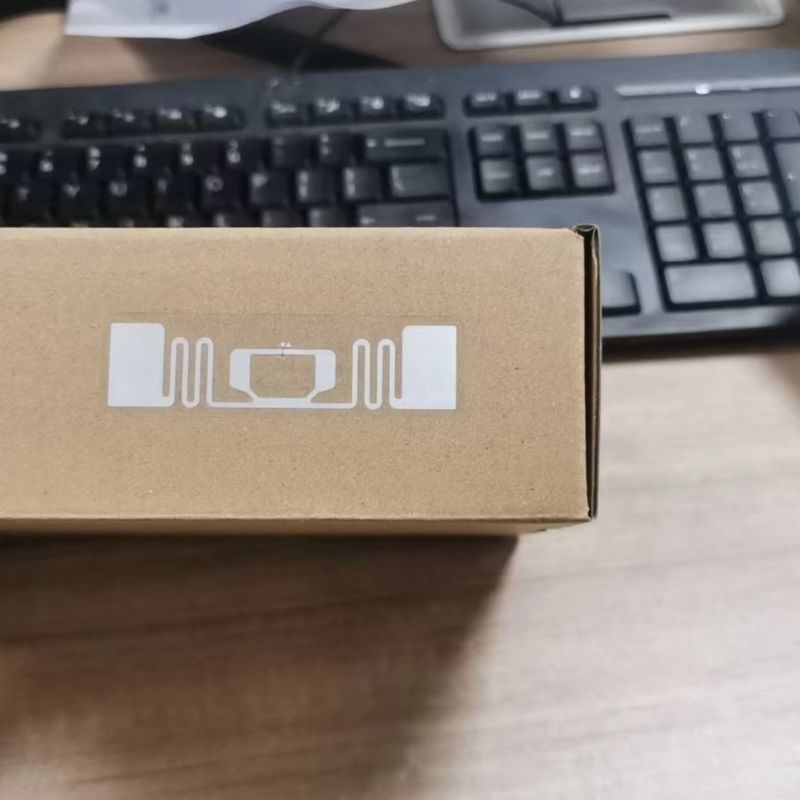
Can RFID Track Location?
Table of Contents
RFID Location Tracking: Streamlining Asset and Inventory Management
By leveraging radio-frequency identification (RFID), businesses can streamline operations, reduce errors, and improve decision-making. This article explores how RFID tags work, their types, and how to implement them effectively for location tracking and asset management.

What Are RFID Tags and How Do They Work?
RFID tags are small devices that store data and communicate with an RFID reader via radio waves. They are used to identify and track objects, assets, or inventory.
Key Components:
- Tag: Contains a chip and an antenna.
- RFID Reader: Sends and receives signals from the tag.
- System Software: Processes the collected data for tracking and analysis.
RFID tags work by emitting signals that the reader captures, providing real-time location or identification data without requiring a line of sight.
What Is RFID Track?
RFID location tracking uses RFID technology to monitor the position of assets or inventory in real time. This tracking solution combines tags, readers, and software to provide accurate location data.
How RFID Track Works:
- Passive RFID tags are read when they pass near a reader.
- Active RFID tags transmit signals continuously, enabling real-time location tracking.
With RFID, businesses can maintain location accuracy for assets, reducing losses and improving operational efficiency.
What Are the Different Types of RFID Tags?
RFID tags come in various forms, each suited for specific applications. The type of RFID tag determines its functionality and range.
Key Types:
- Passive RFID Tags: Powered by the reader’s signal, ideal for short-range applications like inventory management.
- Active RFID Tags: Battery-powered, suitable for long-range asset tracking.
- Semi-Passive Tags: Combine the features of both active and passive tags for specialized applications.
Understanding the different types of RFID tags helps businesses choose the right solution for their needs.
How Do Passive and Active RFID Tags Differ?
The choice between passive RFID and active RFID depends on the range, cost, and application.
| Feature | Passive RFID | Active RFID |
|---|---|---|
| Power Source | Powered by the reader | Battery-powered |
| Range | Up to 10 meters | Over 100 meters |
| Cost | Lower | Higher |
| Applications | Inventory tracking | Real-time location tracking |
Both passive and active RFID tags play crucial roles in modern tracking systems.
How Does RFID Improve Asset Tracking?
Asset tracking with RFID enables businesses to monitor valuable items efficiently. By attaching RFID tags to assets, companies can ensure better visibility and control.
Key Benefits:
- Real-Time Tracking: Updates location instantly.
- Error Reduction: Eliminates manual entry mistakes.
- Integration: Works seamlessly with asset tracking software.
RFID solutions streamline the asset management process, enhancing accountability and reducing operational risks.
What Are the Benefits of Using RFID for Inventory Management?
Implementing RFID for inventory management can revolutionize the way businesses handle stock.
Advantages:
- Improved Accuracy: Automates data collection for error-free tracking.
- Efficiency Boost: Speeds up stock audits and replenishment.
- Visibility: Provides real-time insights into inventory levels.
With RFID, businesses can achieve higher inventory accuracy and meet customer demands more effectively.
What Are RFID Tracking Systems?
An RFID tracking system is a comprehensive solution that combines hardware and software to identify and track assets.
Components:
- Tags and Readers: Core hardware for data collection.
- Tracking Software: Processes and visualizes the data.
- ERP System Integration: Aligns tracking data with broader business systems.
By deploying RFID, companies can streamline operations and gain better control over their resources.
How Can RFID Enhance Supply Chain Efficiency?
RFID plays a pivotal role in optimizing the supply chain by ensuring smooth operations and reducing delays.
Benefits:
- Streamlined Processes: Automates tracking from production to delivery.
- Reduced Losses: Prevents misplacement or theft.
- Enhanced Visibility: Tracks goods throughout the entire supply chain.
Using RFID track technology, businesses can achieve faster and more reliable supply chain management.
What Are Common Applications of RFID Location Tracking?
RFID location tracking is used in various industries to enhance efficiency and accountability.
Common Use Cases:
- Retail: Tracks inventory to prevent stockouts and theft.
- Healthcare: Monitors medical equipment and patient records.
- Manufacturing: Tracks tools and machinery in real time.
By integrating RFID track systems, businesses can achieve real-time location insights across diverse applications.

FAQs About RFID Location and Asset Tracking
How do RFID tags work for location tracking?
RFID tags transmit data via radio waves to a reader, which processes the information to determine the asset’s location.
What are the benefits of using RFID for asset management?
RFID improves visibility, accuracy, and efficiency in asset tracking and management, reducing losses and enhancing accountability.
What’s the difference between passive and active RFID tags?
Passive tags rely on a reader’s signal, while active tags use an internal battery for continuous data transmission.
How does RFID improve inventory tracking?
RFID automates inventory management, providing real-time updates and reducing human errors.
Comments
Hot Products

What Is RFID Waste Management
Imagine a city where every trash bin speaks — not literally — but through a tiny chip that tells the system when it’s full, when it’s emptied, and where it went. That’s what RFID waste management is doing today.

What are Bolt Seals and their Applications? | Complete Guide
In global trade and logistics, bolt seals play a crucial role in ensuring cargo security and compliance. These small but powerful devices are designed to lock shipping containers, trailers, and cargo doors with a tamper-evident mechanism.

What is an RFID Card Protector? Benefits, Use Cases, and Buying Guide
RFID technology (Radio Frequency Identification) is everywhere: in your credit cards, ID badges, transit passes, hotel room keys, and more. It offers speed and convenience, but it also opens the door to a new kind of digital theft called “skimming.” That’s where an RFID card protector comes in.

RFID Wristbands for Events: Bulk Buying Guide for Organizers
RFID wristbands for events are becoming the go-to solution for organizers who need faster entry, fraud prevention, and cashless payments at concerts, festivals, and sports venues. Unlike paper tickets or QR codes, these smart wristbands use embedded chips to streamline access, secure transactions, and improve the guest experience.

How RFID Tag on Windscreen Improves Vehicle Access Control and Toll Systems
In today’s fast-paced world, vehicle identification needs to be quick, secure, and contactless. An RFID Tag on the Windscreen provides exactly that — a reliable way to manage toll collection, parking, and gated access without stopping vehicles.

The Benefits of RFID Linen Tags in Commercial Laundry
Managing laundry in hospitals, hotels, or large laundry services is a big job. Each day, thousands of sheets, towels, and uniforms are washed, sorted, and sent back out. But problems like lost linens, sorting mistakes, and manual counting can cost companies a lot of money. For example, mid-sized hotels can lose over $200,000 each year from missing linens.
That’s where RFID Linen Tags come in.
Tags
RELATED BLOGS

What Is RFID Waste Management
Imagine a city where every trash bin speaks — not literally — but through a tiny chip that tells the system when it’s full, when it’s emptied, and where it went. That’s what RFID waste management is doing today.

What are Bolt Seals and their Applications? | Complete Guide
In global trade and logistics, bolt seals play a crucial role in ensuring cargo security and compliance. These small but powerful devices are designed to lock shipping containers, trailers, and cargo doors with a tamper-evident mechanism.

What is an RFID Card Protector? Benefits, Use Cases, and Buying Guide
RFID technology (Radio Frequency Identification) is everywhere: in your credit cards, ID badges, transit passes, hotel room keys, and more. It offers speed and convenience, but it also opens the door to a new kind of digital theft called “skimming.” That’s where an RFID card protector comes in.




